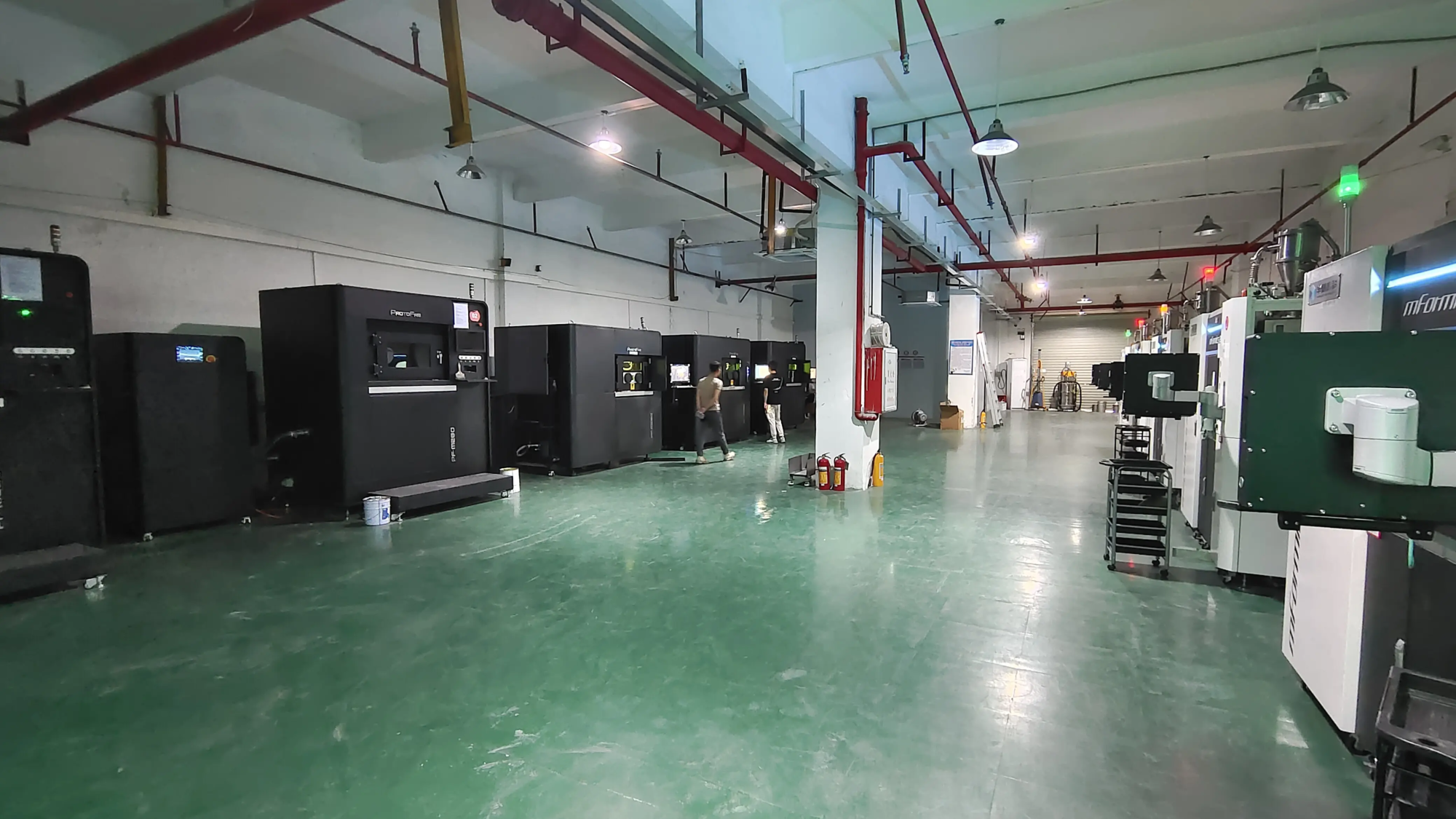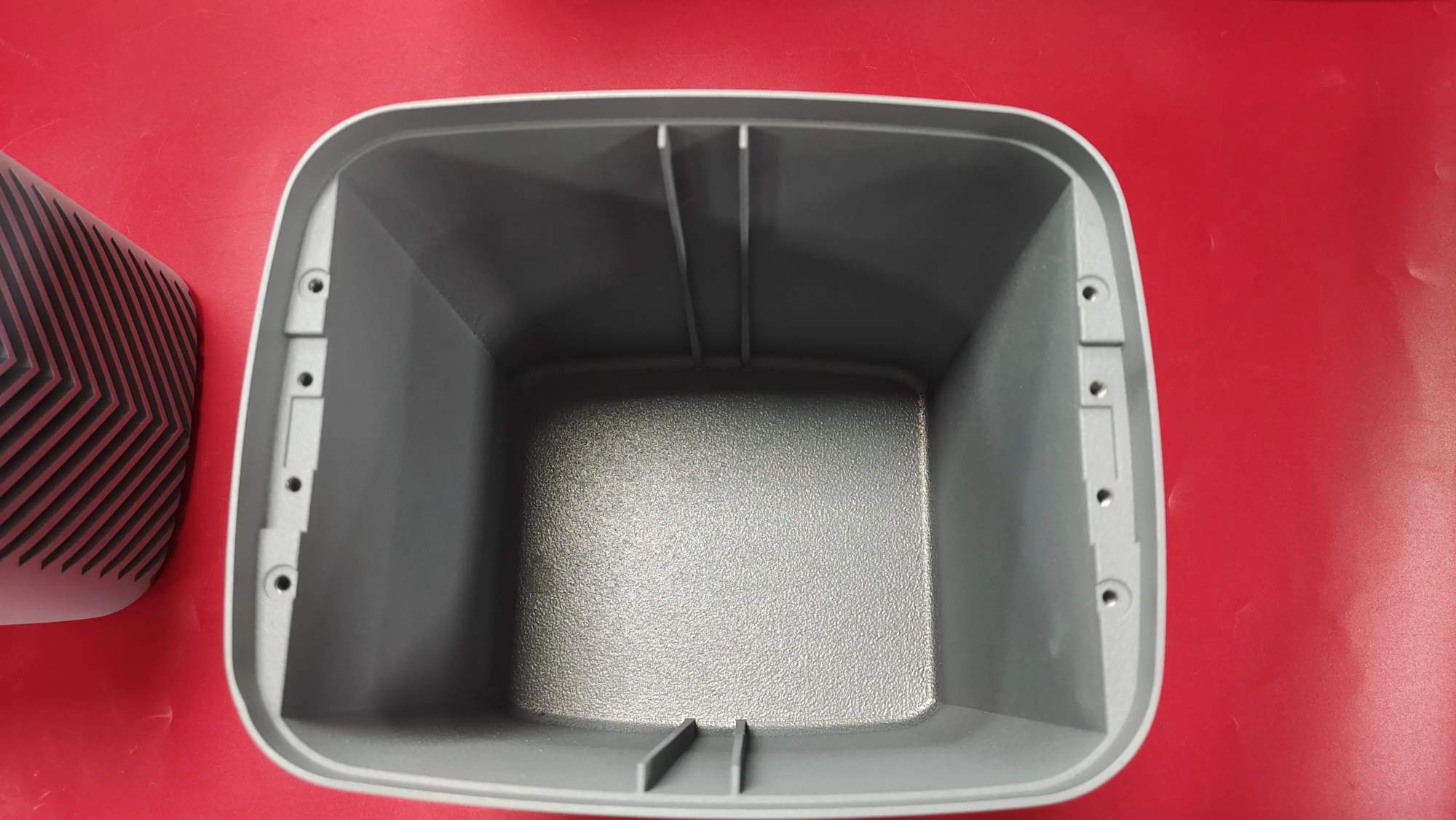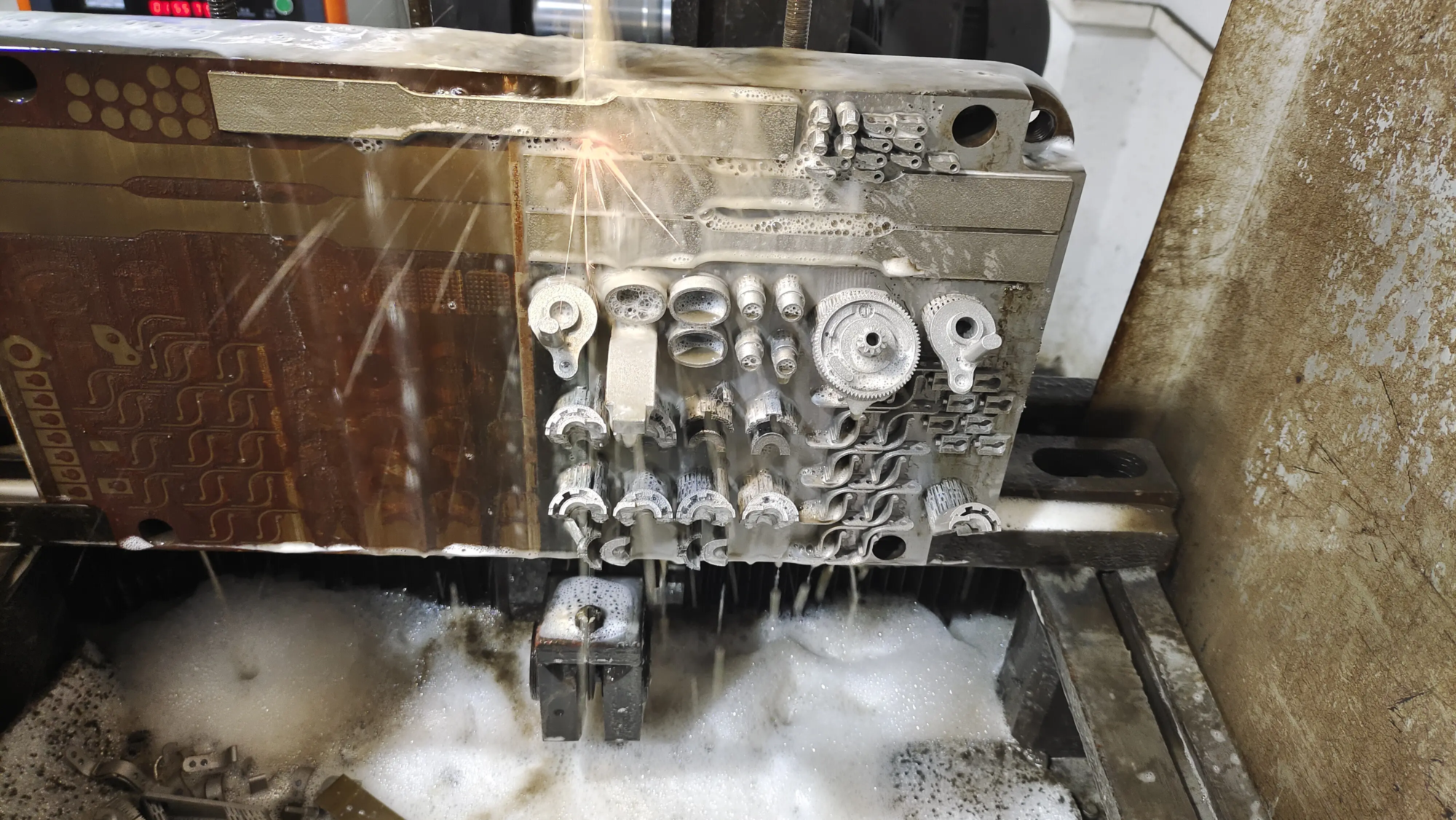Silicon Tide: How the Gulf region can shape the next industrial revolution through 3D printing
The Bay Area, long-time synonym for digital innovation in software, social media and semiconductors, is experiencing a strong physical transformation. This time, the revolution is not limited to code or microchip wires. It is tangible, constructable, and is usually metal. The area is undeniable in the center of A 3D printing boomfundamentally reshapes the way prototypes are developed, making complex parts and brand new products have come to life.
This surge is not accidental. Here are the perfect synergy of several key Bay Area ingredients:
- Deep technical roots: Decades of computing leadership, materials science (led by powerful universities like Stanford and UC Berkeley), and advanced engineering provide the basics.
- Venture Capital Vision: The world’s most intensive venture capital focuses on promising hardware and deep technology startups and recognizes the transformative potential of additive manufacturing beyond the amateur field.
- The need for rapid innovation: From self-driving cars and aerospace giants such as Lockheed Martin’s Sunnyvale Operation to cutting-edge biotechnology and medical device companies, headquartered or a large number of representative industries. Require With rapid iteration, traditional methods cannot use complex geometry and the elasticity of the supply chain. 3D printing is available in all respects.
- Hardware revival: The Bay Area is witnessing a renaissance of hardware startups. 3D printing greatly reduces the barriers to entry into prototyped complex physical products, validating and iterating cycles faster than ever before.
- Aspiring Sustainable Development Center: With ambitious climate goals, local companies are exploring the ability of 3D printing to reduce material waste, optimizing weight-reducing parts designs (critical for mobility and aerospace fuel efficiency), and enabling local on-demand production.
Beyond Plastics: Metal Revolution Flying
Although the Bay Area has a variety of additive technologies, the most important impact is Metal 3D printingspecial Selective laser melting (SLM). In the process, high-power lasers fuse layer by layer with high metal powders, which can unlock unimaginable functions through traditional processing or casting:
- Complexity of the standard: SLM effortlessly creates complex internal channels, lattice structures (for ultra-light strength) and organic shapes, which improve performance while reducing weight – critical to aerospace components and implants.
- Merge components: Now, once-hard assembly parts can be printed as a single, optimized unit, improving reliability and simplifying supply chains.
- Accelerated prototype: Functional metal prototypes can be produced in days rather than weeks or months, cutting the development cycle and enabling faster market entry.
- Small batch production: For highly specialized, high-value parts, traditional tools are over-cost (such as custom medical implants or unique aerospace bays), SLM offers a cost-effective low-volume manufacturing industry.
But unlocking the full potential of metal 3D printing requires more than a printer. Manufacturing success depends on overcoming the critical challenges faced by Bay Area innovators every day.
Mastering Metal Journey: The Components From Concept to Complete
The real challenge of metal AM is not just melting the powder; it is mastering the entire process chain to deliver Repeatable, high-quality functional parts. This requires deep expertise across critical stages often underestimated:
- Design of Additive Manufacturing (DFAM): Radical design optimization is crucial. Just adapt the traditionally made design and miss the point. The real value comes from design for The process – leverages topological optimization, generate design and an understanding of supporting structures and thermal stresses. The Bay Area team is pushing the DFAM border every day.
- Process parameters mastery: SLM is complicated. The laser power, scanning speed, hatching pattern, layer thickness and powder characteristics must be carefully adjusted for each specific geometry and material. Experience ruled the supreme.
- Non-destructive testing and certification: Ensuring structural integrity, especially in aerospace and medical applications, requires advanced CT scans, surface roughness analysis, and strict mechanical testing protocols consistent with industry standards.
- Key post-processing: Parts are brand new from the printer (parts "Green State") Just the beginning. This is a True one-stop service becomes essential:
- Support removal: Careful removal of complex support structures is crucial in the printing process.
- Heat treatment: Stress relief and optimizing material properties (e.g., thermal isostatic press-HIP).
- Surface finish: The desired surface smoothness is achieved by machining, grinding, polishing or beading/shooting.
- Professional paint: Apply protective or functional coatings, such as anodized or plated plates.
- Precision machining: Add tight features via CNC as needed.
The risk of ignoring any steps fails. This complex journey is a valuable asset for professional partners to become Bay Area innovators.
GRESTHILE: Powering Bay Area Innovation with End-to-End Metal Solutions
For pioneers driving the Bay Area 3D printing revolution, making the complexity of high-performance metal prototypes requires partners with deep expertise, cutting-edge capabilities and unwavering quality commitments. Great Standing at the forefront, it provides important support for this dynamic ecosystem.
As a professional rapid prototyping manufacturer specializing in metal additive manufacturing, Greatlight has The most advanced SLM 3D printeradvanced Production technologyand Extensive materials science knowledge Effectively solve the most challenging metal prototyping problems. We understand the demands of speed, accuracy and reliability facing innovators in the pressure Bay region.
What makes Greatlight unique Major Rapid Prototyping Companies?
- Advanced SLM expertise: We can not only operate the printer; we have mastered them. Our in-depth understanding of laser melting parameters ensures optimal part quality and integrity for a wide variety of complex geometries.
- Comprehensive Materials Portfolio: Use a variety of high-performance alloys (e.g., Titanium Ti64, Aluminum ALSI10MG, Stainless Steel 316L/17-4PH, Inconel 625/718, Cobalt-Chrome) and the ability to explore custom materials to meet the needs of unique projects.
- True one-stop post-processing: We go far beyond basic printing. Greatlight seamlessly integrates key services such as expert support for disassembly, professional heat treatment (including hip joints), precision CNC machining, and a set of surface finishing options (grinding, polishing, polishing, bead blasting, anodizing, plating) – delivered under one roof. This eliminates logistical headaches and ensures excellent quality control throughout the process.
- Unrivaled speed and flexibility: Understanding the pace of the Bay Area, we prioritize rapid turnover for prototyping and low-volume production. Our capacity can be customized and iterated quickly.
- Competitive value: Combining advanced capabilities with effective operations in China can enable high-quality quality Accurate rapid prototype parts at highly competitive priceseven for startups and bootstrap projects, can make cutting-edge metal AM access.
Conclusion: Print here in the future
The 3D printing boom in the Bay Area is far beyond the trend. This is a fundamental change in the way of conception, development and manufacturing of physical innovation. Driven by a unique convergence of technical ambitions, investments and application demand, the region is cementing its role as a global leader in advanced additive manufacturing.
Metal 3D printing, especially SLM, is becoming an indispensable tool to push the boundaries of aerospace flight, medical care, automotive performance, and other regions. But success requires expertise throughout the journey – from innovative DFAM to rigorous post-processing.
For innovators in the Bay Area and around the world, seek partners to transform their bold metal AM concept into high-quality, functional reality with speed and accuracy, Great It provides a basic combination of advanced SLM technology, comprehensive one-stop sorting services and competitive prices. We are committed to powering the next physical innovation.
FAQ: Learn about rapid prototyping and metal 3D printing
-
What is a rapid prototype?
Rapid Prototyping (RP) refers to the technology that quickly creates physical models or functional prototypes directly from 3D CAD data. Compared with traditional methods, technologies such as SLM (selective laser melting), SLS (selective laser sintering) and FDM (fusion deposition modeling) enable designers and engineers to iterate rapidly in design, test forms, fit and function, and accelerate product development cycles compared to traditional methods.
-
Why is metal 3D printing (such as SLM) a big deal for the industry?
Metal 3D printing offers transformative advantages:
- Complex geometric shapes: Create impossible parts by machining/casting (internal channels, lattice).
- Lightweight: Design has minimal design optimization (critical in aerospace/automotive).
- Rapid prototyping: Functional metal parts for several days/weeks, super-speed development.
- merge: Combine components into single parts to reduce failure points.
- Low-volume production: Economy of custom parts (medical implants, aerospace fixtures) without expensive tools.
- Material efficiency: Compared with the subtraction method, waste is minimized.
-
What challenges does metal AM face and how can Greatlight help?
Common challenges include:
- Design Complexity: Understanding DFAM principles is crucial. Greglight provides technical advice.
- Surface finish: The surface of the scale is usually rough. Greglight’s extensive Post-processing service (processing, polishing, blasting) to achieve the desired finish.
- Mechanical properties: Accurate control is required and frequent heat treatment (HIP). Greglight Masters Materials Science and Post-treatment Programs.
- Cost Management: Processing usually represents most of the cost. Greglight integration One-stop service (Print to finish) Optimize workflow and cost control.
-
Can Greatlight only be prototyping?
although Rapid prototyping It is a core force that uses our SLM printerGreglight seamless transition to Low volume production and Custom parts manufacturing. Our features are ideal for bridge production, specialized tools, replacement parts, and end-use components, where complexity or low volume makes traditional methods impractical or expensive.
-
Which materials can be handled well?
We focus on a wide range of Metal powder: Titanium alloy (TI6AL4V/ELI), aluminum alloy (Alsi10mg, ScalMalloy), stainless steel (316L, 17-4PH), nickel alloy (Inconel 625, 718), cobalt-dye (COCR) and tool steel. We also explore feasibility Customized materials According to project requirements.
- Why choose Greatlime over local Bay Area stores?
Greglight combines World-class SLM technology and material expertise Inside the optimization One-stop service model. This integration, coupled with our Competitive pricing advantages Get excellent value from effective operations. We understand the Bay Area’s speed to market demand and provide reliable high-quality results comparable to quality local stores, and are usually significantly lower in prices. Our focus is to effectively solve complex metal prototyping and manufacturing challenges. Get a quote now and experience the huge difference.





